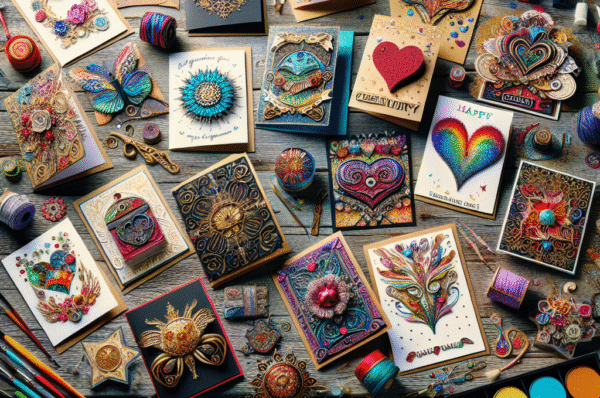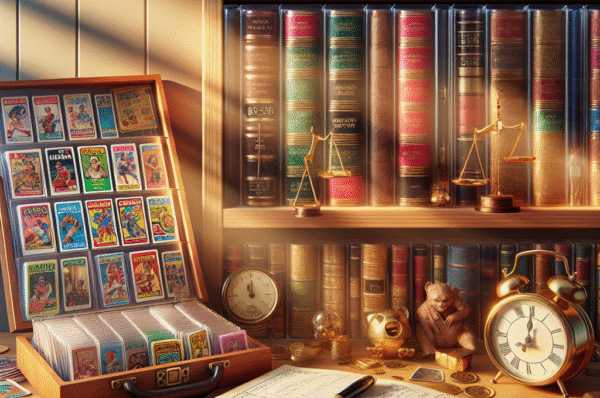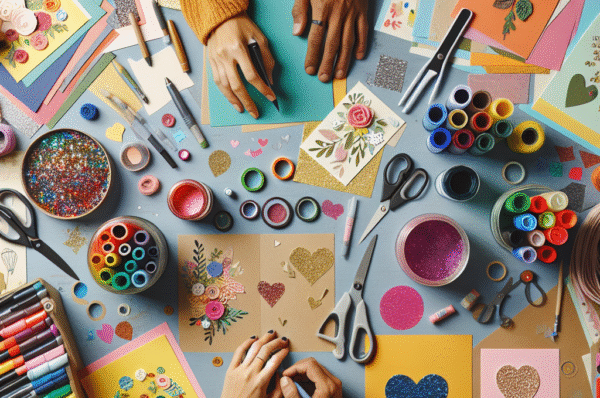In a world saturated with digital communication, the charm of a custom-made card remains unmatched. Whether it’s for a birthday, anniversary, holiday, or just to say “I’m thinking of you,” custom cards add a personal touch that can brighten anyone’s day. If you’re ready to unleash your creative side and design your own custom cards, this ultimate guide will provide you with the steps, tools, and inspiration needed to create stunning pieces of art.
1. Finding Your Purpose
Before diving into the design process, consider the purpose of your card. Is it a festive greeting for a holiday, a heartfelt note for a loved one, or a business card introducing your services? Understanding the purpose will guide your design choices, color schemes, and typography.
Tips:
- Brainstorm themes that resonate with the occasion.
- Think about the emotions you want to evoke with your card.
2. Inspiration and Mood Boarding
Gather inspiration from various sources such as nature, art, or online platforms like Pinterest, Instagram, or design blogs. Creating a mood board can help consolidate your ideas and serve as a visual reference throughout your design process.
Steps to Create a Mood Board:
- Collect images, color swatches, typography examples, and textures.
- Use digital tools like Canva or Adobe Spark, or simply go the old-fashioned route with magazine cutouts.
- Arrange your finds in a way that reflects your vision.
3. Selecting Your Tools
Depending on your preferences and skill level, you can choose from a range of tools for card design.
For Hand-Crafted Cards:
- Paper: Cardstock is a popular choice for its durability.
- Drawing Tools: Colored pencils, markers, watercolor paints, or calligraphy pens.
- Embellishments: Stickers, washi tape, stamps, and ribbons can add unique touches.
For Digital Cards:
- Design Software: Adobe Illustrator, Photoshop, or free alternatives like GIMP or Canva.
- Templates: Many online platforms offer customizable templates to kickstart your design.
- Fonts and Graphics: Websites like Google Fonts, Creative Market, and Unsplash provide excellent resources.
4. Choosing Colors and Typography
Colors and typography play a significant role in the mood and readability of your card.
Tips on Color Selection:
- Consider the psychological impact of colors. For example, red evokes excitement, while blue conveys calmness.
- Use a color wheel to find complementary or analogous colors.
Typography Tips:
- Choose fonts that are easy to read. Pair script fonts with sans-serif fonts for a modern touch.
- Limit yourself to two or three font styles to maintain a clean look.
5. Designing Your Card Layout
Begin to map out the design of your card. Whether it’s a single fold card or a flat postcard, the layout should facilitate a smooth flow of information and visuals.
Layout Tips:
- Use a grid system to align elements uniformly.
- Leave some white space for a clean and crisp look.
- Incorporate focal points that naturally draw the eye to important information.
6. Adding Personal Touches
Customization is where your card truly shines. Whether it’s a hand-written message, illustrations that reflect the recipient’s interests, or unique embellishments, personal touches make all the difference.
Ideas for Personalization:
- Handwritten notes or quotes that hold significance.
- Custom illustrations or images of shared memories.
- Incorporate the recipient’s favorite colors or symbols.
7. Finalizing and Printing Your Design
Once you’re satisfied with your design, it’s time to finalize and print. Take the time to proofread any text and ensure images are of high resolution for printing.
Printing Tips:
- Print at home or use a local print shop for professional quality.
- Experiment with different paper finishes such as matte, glossy, or textured.
- Consider investing in envelopes that complement your design.
8. Sharing Your Creation
After designing and printing your custom cards, it’s time to share them with the world. Write meaningful messages inside each card, or plan a card-sending campaign to brighten up the days of your friends and family.
Tips for Sharing:
- Host a card-making party with friends to showcase your creation process.
- Share your designs on social media to inspire others.
- Consider creating an online store if you want to sell your custom cards.
Conclusion
Designing custom cards allows for boundless creativity and personal expression. With this ultimate guide, you’re equipped to create beautiful, one-of-a-kind cards that can be cherished by the recipients. Remember, the journey of creation is just as important as the end product, so enjoy the process and let your imagination run wild! Unlock your creativity today and bring a smile to someone’s face with your custom card design.




